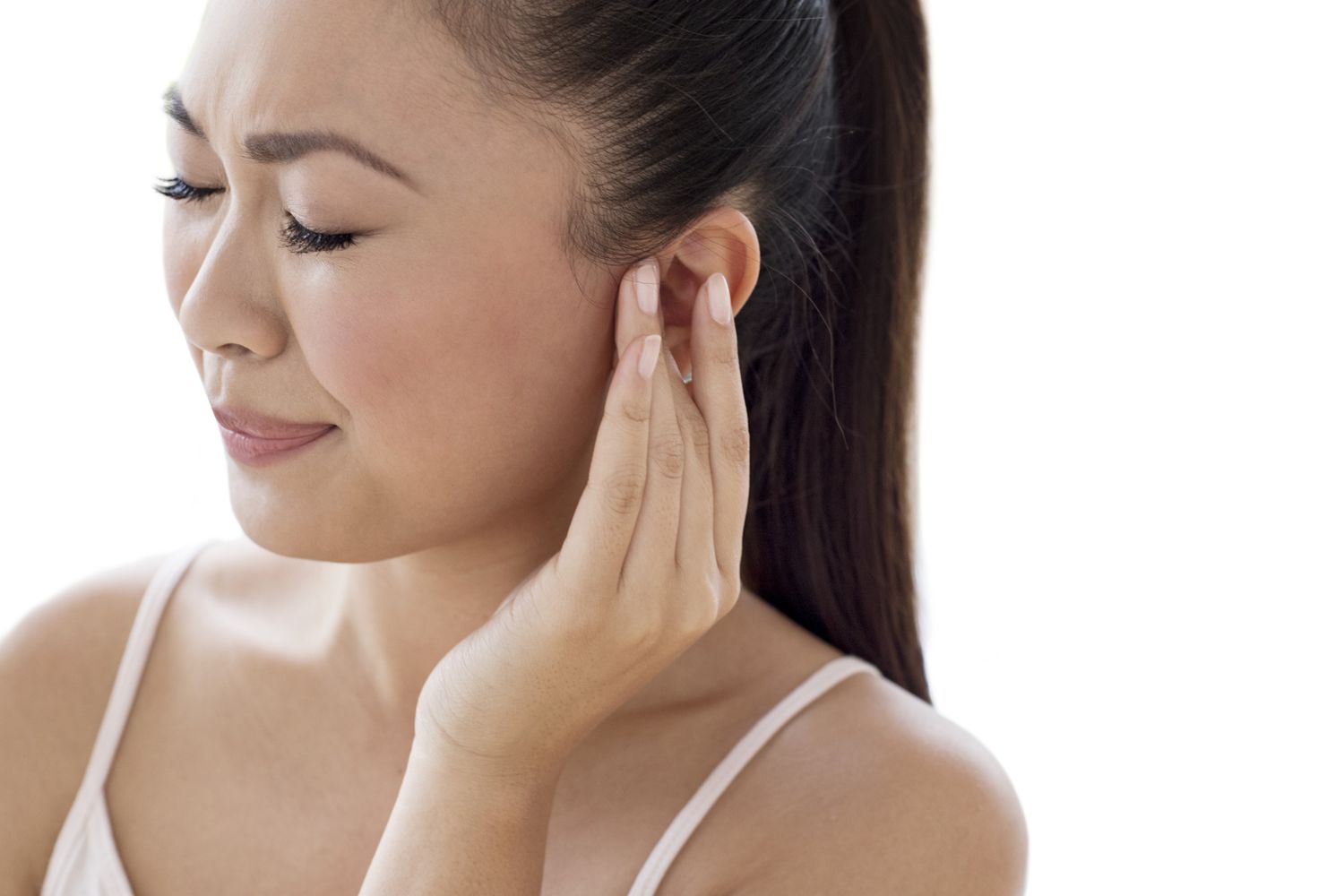Many parents understand the challenges of caring for children who suffer from the ailment of an ear. For infants and children the ear infection must be dealt with and effectively However, they’re usually not cause for major worry.
In adults, ear infections and especially those which don’t clear quickly by themselves or through moderate treatment, may be an indication of more serious health issues. Ear infections may begin with something that seems like sinus congestion. However, they could be linked to more severe ailments. Also it is important to not be dismissed as a sign of a problem.
What are Ear Infections?
Ear infections can be caused by many reasons and be manifested in a variety of ways. For adults, ear problems are usually identified by the ear hurt, drainage of fluid into the ear canal, dizziness and a temporary lost hearing. For children, these conditions may also be accompanied by an increase in temperature, irritability and a loss of appetite and even a loss of balance.
Similar to other ailments within your body, these infections can be due to the presence of viruses or bacteria in the ear. The most common cause of ear infections is upper respiratory illnesses like the common cold, flu or allergies. Other reasons for congestion, stuffiness, or swelling of nose passages like smoking, can cause an ear infection.
The eustachian tubes are tiny passages inside the head that connect the middle ear towards the throat’s back. The tubes are used to are used to drain fluid out of the ear as well to regulate the air pressure within the ear. If the tubes are blocked or blocked and fluid builds in an ear canal, increasing risk of getting an infections.
Tubes that are blocked in the eustachian could be due to swelling of the sinuses due to sinus infections or seasonal allergies. It’s also possible that the adenoids which are small tissues at the back of the nose that support the immune system of your body, may enlarge and block the tubes of the eustachian. The adenoids may get swollen while your body is fighting against an infection. This is a reason why the ear infection is often experienced when they are in combination with other types of disease.
For children, it’s the eustachian tubes which are in the majority of Ear infections. The tubes are small, and the dimensions of the adenoids inside the child’s head, indicate that the ears aren’t always capable of draining properly. Additionally the eustachian tube is located more horizontally in a baby’s head, as opposed to being angled downwards as they would later in the course of. Other elements, like feeding infants with bottles instead of breastfeeding, could increase the risk of developing an infection in the ear.
Common Symptoms of Ear Infections
Ear pain is one of the first signs you may have an infection in your ear. Pain can come from swelling in the tissues in and around the ear, as well as from the buildup of pressure on the eardrum. As fluid from the inner and middle ear stop draining naturally, pressure builds against the eardrum. Without treatment, it is even possible for the eardrum to rupture.
Hearing loss that is not explained is the most common symptom of Ear infections. A build-up or swelling of earwax within the auditory canal may serve as an earplug stopping sounds from getting to the eardrum. Additionally, the pressure created by the accumulation of fluid inside the middle ear could stop the eardrum from moving normal, thereby preventing the transfer of sounds inside the ear. In addition, swelling of parts of the inner ear may cause sound to not be recognized as normal.
Ear canals that drain fluid is also a indication for an ear infection. In middle and inner Ear infections, the fluid is held in an ear via the eardrum. It is possible that the eardrum ruptures and release the fluid through the canal of the ear. In certain infections of the outer ear, swelling and edema may cause fluid to leak out of into the ear canal.

Types of Ear Infections
There are several kinds of ear infections, and the particular variety of infection you may have depends in large part on what part of the ear is involved. Generally, ear infections are broken up into three categories: inner ear infections, middle ear infections, and outer ear infections.
The symptoms of ear infections are common to all three kinds, however the cause, treatment and symptoms specific to each will vary based on the type of infection you suffer from. The symptoms might be similar, however treatments vary between different kinds of infections, it’s crucial to talk with a doctor if your symptoms do not improve in some days.
Inner Ear Infections
Labyrinthitis refers to the medical term that describes an inner ear condition. The type of ear infection is affecting the labyrinth, which is a tiny structure located deep within the ear. The ear infections of these types could cause vertigo, dizziness, and the loss of balance. Similar to all ear infections labyrinthitis is also a cause of difficulty hearing.
Tinnitus, also known as ringing in the ear, can be an indication of an infection in the ear canal. It’s also possible that you have blurred or double vision. As with other types of ear infections and infections, leakage of fluid or pus from the ear is an occurrence.
Typically, symptoms of labyrinthitis appear quickly in the initial week of illness. The symptoms typically disappear within a few days but sometimes they may have long lasting effects that impact your life quality, and could even affect the ability of you to complete simple tasks.
Middle Ear Infections
In adults the acute otitis media can be an ear infection that affects the middle. This type of ear problem is identified with the appearance of excessive fluid, contaminated and infected in the middle ear, as well as irritation of the middle ear.
The risk of an infection spreading to adjacent tissues is always a worry. When it comes to an ear infection, this may be a cause of injuries to the bones that surround the ear. Additionally, it’s possible that an ear infection could cause damage to affect the surrounding tissues of the brain. The condition, also known as meningitis can turn life-threatening if not treated.
One of the main issues that arises from a middle ear infection is the risk of the eardrum being damaged, or even breaking. A ruptured eardrum could result in a variety of symptoms. Permanent or temporary loss of hearing dizziness, tinnitus and pain are the most common signs of an eardrum that has ruptured. Most times, a ruptured eardrum heals in several weeks, however it is likely that it will require surgery. A ruptured eardrum can let more pathogens enter the ear’s lining and increase the chances of getting hearing infections in the future.
Outer Ear Infections
It is possible for the auditory canal that connects your eardrum as well as the outside portion of your skull to get affected. This kind of ear infection called otitis externala and is typically associated with injuries to the skin within the auditory canal as well as the entry of foreign substances or water in the ear. Outer ear infections are characterized by pain around and in the ear, and also swelling, and occasionally an increase in fluid.
When the auditory canal is blocked due to swelling or a accumulation of earwax or fluid, it’s possible to experience hearing issues. There may be tinnitus or ear ringing and balance issues such as vertigo caused by an infection of the ear’s outer canal.
Infections of the outer ear are usually caused by an irritant or pathogen that penetrates the earwax’s protective layer and the lining that surrounds the auditory canal. This may cause swelling and a buildup in fluids around the area affected. This type of infection can also be associated with itching, which could trigger a desire to scratch the area affected, possibly aggravating the condition.
External otitis is also called swimmer’s ear is named so because the increased water inside the auditory canal frequent among those who spend a lot of time in water, can cause a softening of the ear’s lining and alter the micro-flora that inhabits the canal. This could make the ear more prone to bacterial infections.
How are Ear Infections Treated?
Some mild adult ear infections can be treated with simple home remedies. Though these can sometimes be effective in relieving the symptoms of congestion, pain, and itching associated with an ear infection, it is important to always seek medical attention, particularly if your symptoms do not clear up within a few days.
Because a lot of ear infections stem due to colds, allergies and respiratory infections of the upper respiratory tract the first step in preventing and treatment of the ear infection is to make sure that your sinuses and eustachian tube are clean. If your ear problem is caused by allergies, the flu or colds, taking over the counter antihistamines and decongestants can reduce the swelling and irritation of your sinuses, which contributes to an increase in fluids inside your ears.
The ear pain caused by an infection of a minor nature is treated with over-the-counter pain relievers such as acetaminophen or Ibuprofen. Because ibuprofen can also help reduce inflammation, using it may be beneficial in the reduction of any swelling that may block the ear canal or the eustachian tube.
Your doctor may want to inspect your ear with a special tool known as an Otoscope. The instrument, which is made up of the magnifying glass with a flashlight is placed into the outside of your auditory canal. It allows your doctor to observe the canal from the eardrum.

Examining your otoscope is generally painless and can help in determining the source and precise the location of your ear problem. In some instances the use of a pneumatic otoscope may be utilized to determine how your eardrum reacts to an increase in pressure. This could help your physician determine how much fluid has build behind your eardrum by studying how it responds to a blow of air.
Hearing tests can be used to determine the severity of ear issues. These tests, similar to the examination using the pneumatic otoscope, have been specifically designed to observe the way your eardrum reacts to sound, which could provide clues to how severe your condition.
To combat chronic bacterial infections within the ear canal, you doctor may occasionally prescribe medicated eardrops to fight the bacterium that causes the infection. They are the most effective against infections of the ear’s outer region where drops are able to reach the location of the infection.
Preventing Ear Infections
Keeping your lungs and sinuses healthy is one of the best things you can do to prevent ear infections. This may mean avoiding known allergens and being careful to wash your hands if you have been around other people who have the even common colds.
Secondhand smoking and smoke exposure are both risk factors that increase the risk of developing hearing infections. Therefore, stopping smoking cigarettes and avoiding smoke from secondhand sources whenever you can will help to avoid potentially harmful infections.
Be careful when washing your ears essential. You must keep the outside part of your the ear canal dry and clean whenever you can, however, doing it too often can result in problems. Be cautious while cleaning your ears using cotton swabs or Q-tips or even tissues. Cleaning methods like these can create foreign matter in the ear which could cause irritation and ultimately lead to the same infection that you’re trying to avoid.
If someone is suffering from multiple infections, more aggressive treatment is likely to be needed. A lot of children with frequent or chronic hearing infections often require ear tubes installed to relieve or stop accumulation of fluid in the ear.








